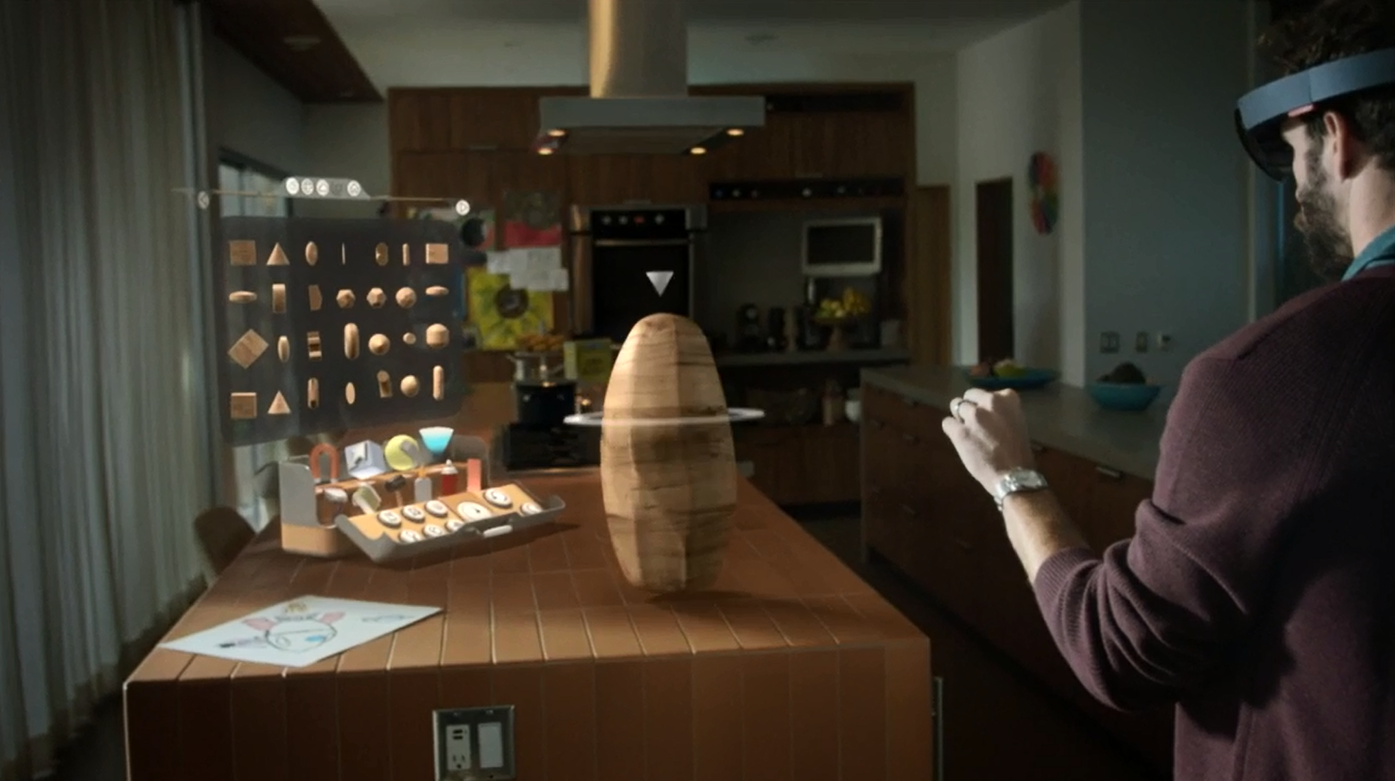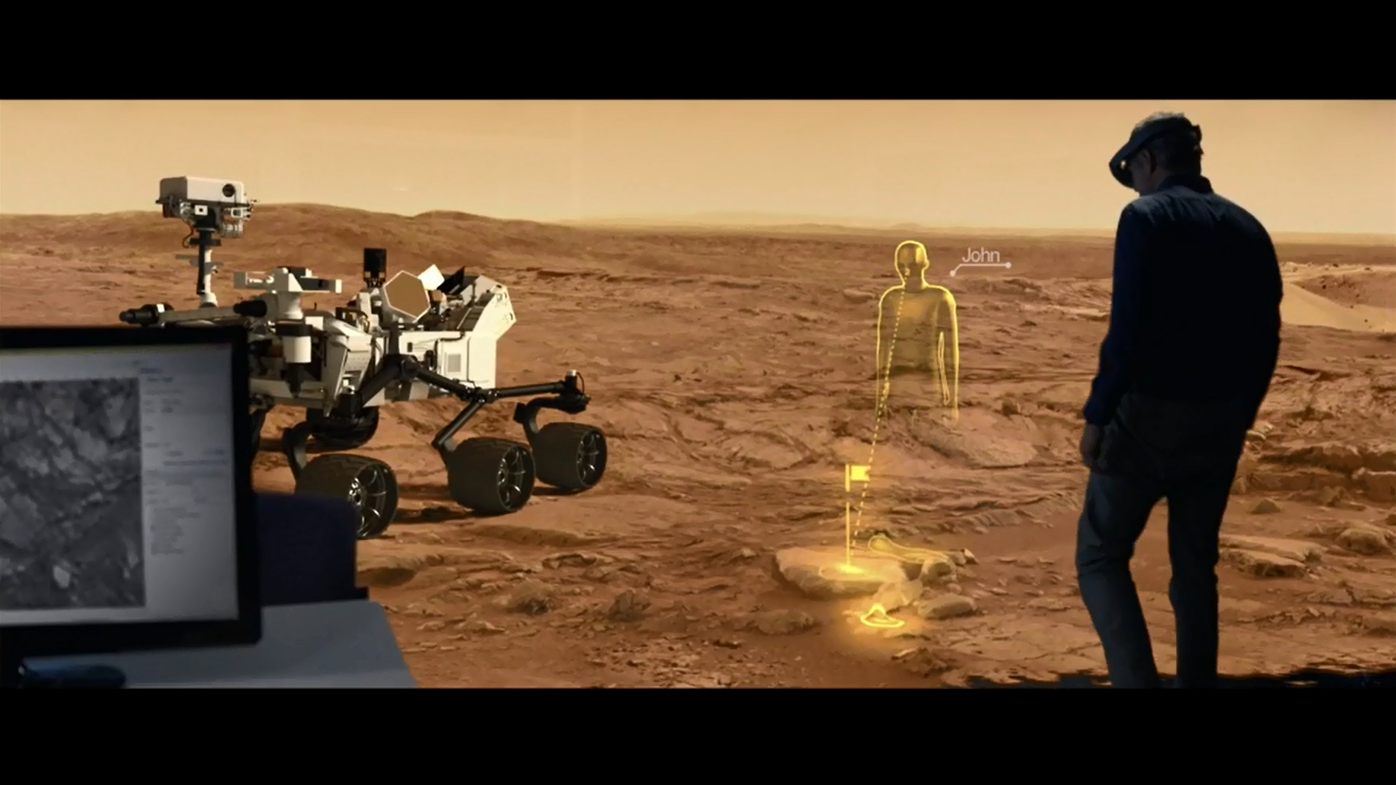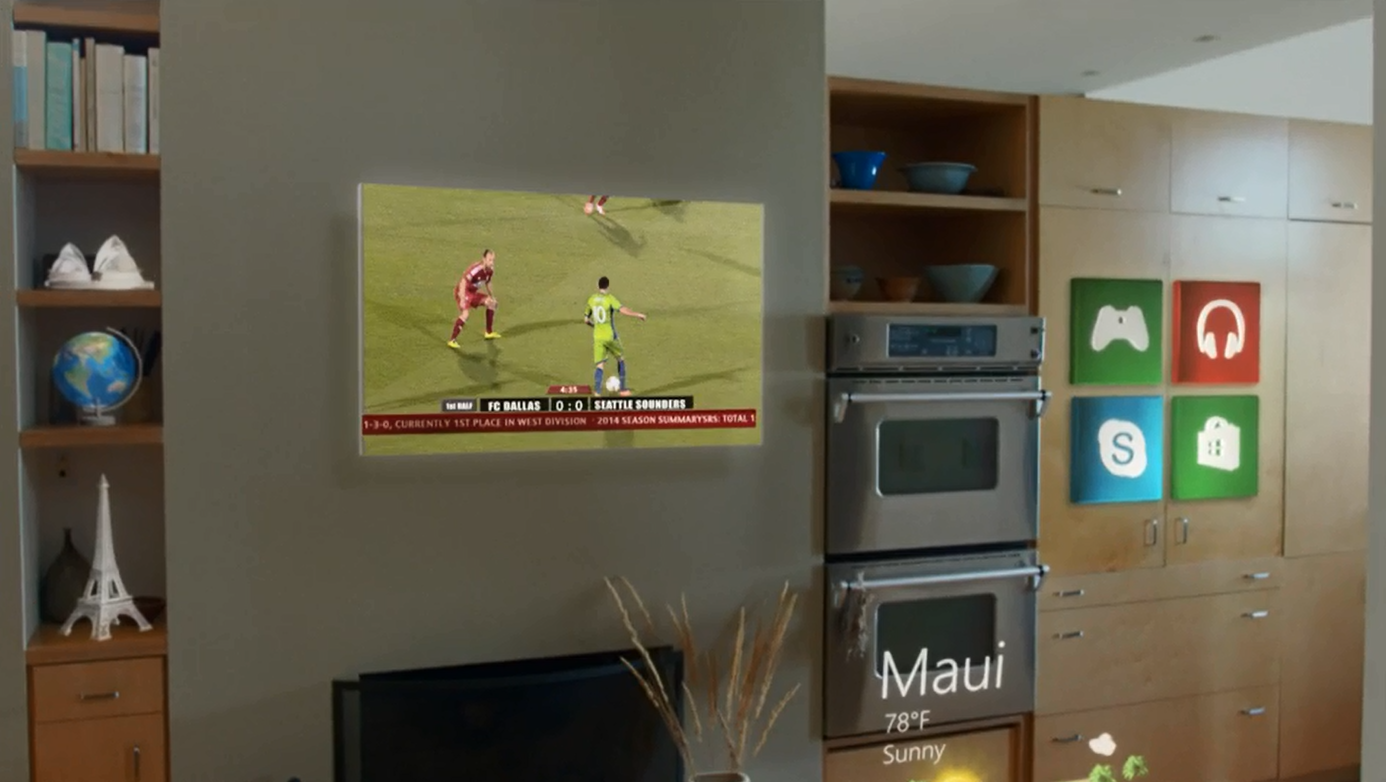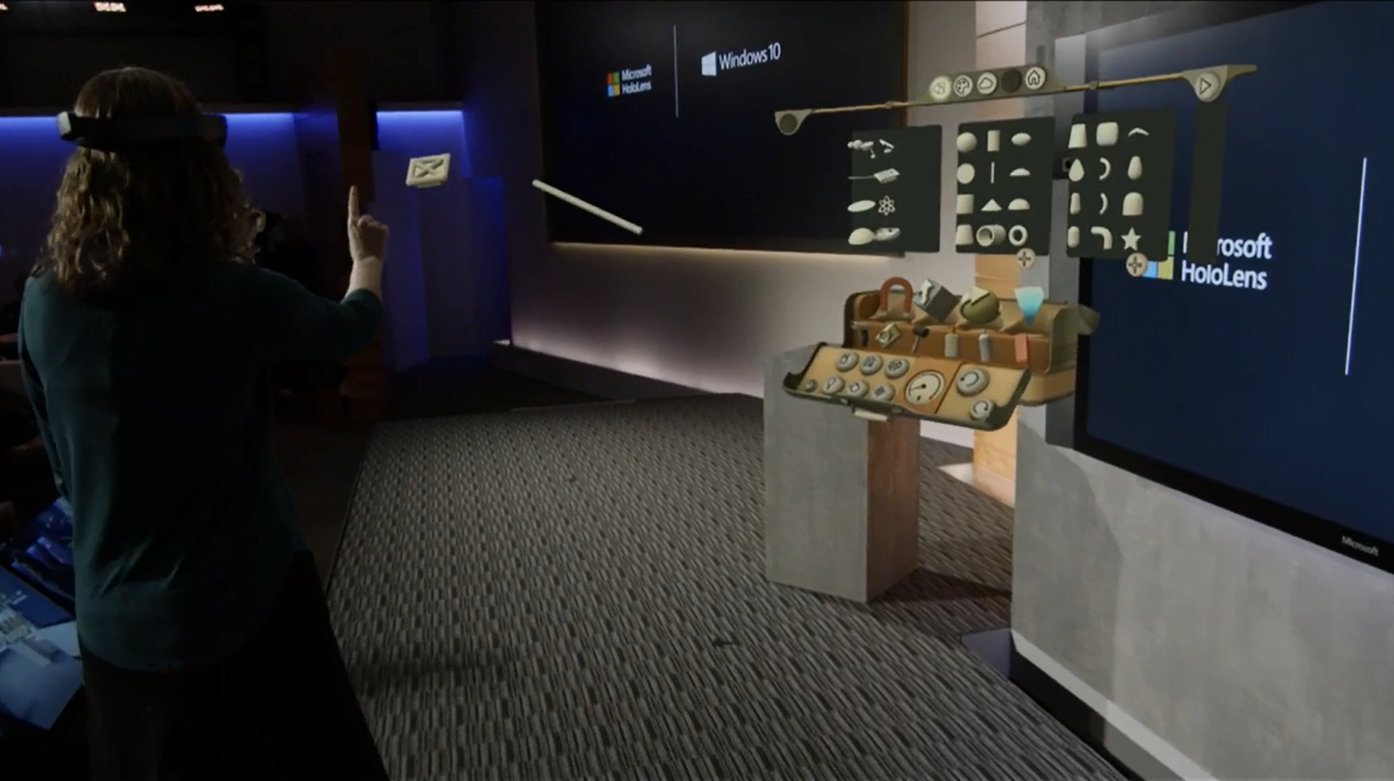Microsoft Announces 'Windows Holographic' As Wave Of The Future
The Windows 10 event today came to a screeching halt when Alex Kipman announced Microsoft's Next Big Thing: a holographic headset called the HoloLens.
Holograms. Microsoft believes the future is holograms.
(It's not that holographic technology isn't compelling; it's just that everyone else calls it "augmented reality." But okay, fine, Microsoft is bringing back "holograms" as an industry term. Moving on.)
Microsoft is tackling a huge task here, and it appears to be doing so almost entirely on its own (although the company has recruited engineers from the Jet Propulsion Laboratory). The company built a clunky-looking headset called the "HoloLens," which contains not just a CPU and a GPU, but also a third processing unit called a Holographic Processing Unit, or "HPU."
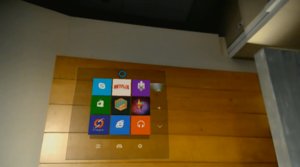

The HoloLens is an untethered, self-contained computer with see-through HD lenses, spatial sound and "advanced sensors." There are no wires and no markers needed, and it does not depend on a mobile phone, nor does it need to be connected to a PC.
From the stage, Microsoft's Alex Kipman said that the HoloLens processes terabytes of data that it pulls from its sensors in real time. The device understands where you're looking, your gestures and your voice.
These holograms are Universal Apps, meaning that there are APIs for them embedded in Windows 10 across all platforms.
Get Tom's Hardware's best news and in-depth reviews, straight to your inbox.
Microsoft played some incredibly impressive-looking videos that showed scientists working with the Mars Rover in a virtual environment; people building virtual devices in 3D; getting help on a plumbing repair, complete with animated instructions superimposed on the actual pipes; Skype chatting with a colleague while strolling through the office; watching TV projected onto a wall; and more.
Possibly the most compelling application there was the TV. Ostensibly, HoloLens would enable you to watch shows anywhere you can project a screen. That means you could stream Netflix anywhere you have a fast-enough Internet connection and a flat surface (or keep watching the game when you're in the john), and no one else would be able to see what you're seeing.
For a live demo, Microsoft brought someone on stage and showed how she used HoloLens and powerful accompanying software, HoloStudio, to build a quadcopter. She tapped, gazed, and tapped to control the virtual pieces. She using voice commands such as "glue" to put the pieces together, "mirror" to copy pieces, and "rotate" to move them around to different orientations.
Microsoft had a 3D-printed version of her quadcopter ready to go -- and they actually flew it onstage.
The whole demo was flawless and sincerely jaw-dropping, but I must admit that I'm deeply skeptical of what Microsoft actually has here. The videos were gorgeous, but those scenarios were clearly just renderings. Even the onstage demo was obviously rehearsed, as evidenced by the "we already 3D printed your creation" bit.
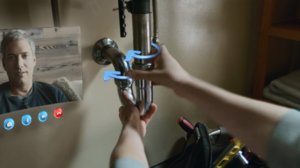

We saw at CES that many, many companies are banging on VR/AR technology, and they're making headway. However, even Oculus Rift's hardware and associated demos (which are incredible, by the way) aren't quite ready to come to market. Are we to believe that one Microsoft team has solved all the design, engineering, UI, input, processing and content problems that an entire emerging industry is still struggling with?
I'm bracing for disappointment with the HoloLens. But I would love very much to be proven wrong, because if this technology -- which Microsoft is presenting as a Real Thing that you can buy within months -- is anything close to being as good as billed, Microsoft just rocked the entire tech industry.
Seth Colaner is the News Director at Tom's Hardware. Contact him at scolaner@tomshardware.com and follow him on Twitter @SethColaner. Follow us @tomshardware, on Facebook and on Google+.
Seth Colaner previously served as News Director at Tom's Hardware. He covered technology news, focusing on keyboards, virtual reality, and wearables.
-
Jason Cardiff Let's see...you're skeptical, the headset is clunky, it's not really a hologram (but moving on...) and you're bracing for disappointment. But you save yourself because you want to be proven wrong, because hey, MS could never innovate like that, right? What a lame story. You sound like just another anti-MS person who has a job on a website.Reply -
surphninja I'm more excited for AR than VR for exactly these uses, but I'm extremely skeptical that it's anywhere close to the renderings. One day it will be, and I can't wait for that day, but we are not there yet.Reply
And we don't need to move on from them using the term "hologram." It's funny, and it's a terrible call. Way to make it sound dated before it even comes out, Microsoft. 'AR' is plenty buzzworthy and doesn't bring back memories of bad 70's movies. Their IllumiRoom or RoomAlive are closer to actual holographics. -
dovah-chan Well he's not wrong in his assumptions of this being a disappointment. We have only just garnered a glance at this device.Reply
It is not unheard of for Microsoft or any company for that matter, to show off a groundbreaking device and only have it be too good to be true. It is fully justified to be skeptical. -
hajila Stop Microsoft... just stop. If you can't get a start button right, you can't get holograms and AR right. Back to basics people.Reply -
codyleemanofaction Im anti-MS - no bones about it. However- I'll be all about MS if this thing is real!!! It's not the first of its kind though- there's at least three other (less well funded) companies with working see through developer kits like this. I was surprised to see that it was Microsoft to bring it out like this- but in light of the time they've had with Kinect- it shouldn't have surprised me at all. Here's to the future!Reply -
velocityg4 Boy will there faces be red when Apple announces a slightly thinner and faster MacBook Air this year. Perhaps with Retina display.Reply -
turkey3_scratch Reply15112320 said:Well he's not wrong in his assumptions of this being a disappointment. We have only just garnered a glance at this device.
It is not unheard of for Microsoft or any company for that matter, to show off a groundbreaking device and only have it be too good to be true. It is fully justified to be skeptical.
Yep hopefully this is not like Google Glasses which people forgot about already. Anyways, what we saw on the images was obviously rendered and not the actual thing. I would be interested to see this thing actually projected, and also its uses.
The most important concept of any device is its usefulness. If something's usefulness is just showing off or being new and innovative, it will not sell unless it has a specific purpose. So what makes this better to use than a desktop computer for 3D modeling? Would it even have sufficient hardware to do any intense modeling other than a 3D plane? Also, what does the OS look like and environment? Too many questions to judge good or bad right now.
But all in all these companies need to stop pursuing generally pointless things, not meaning to be rude.
